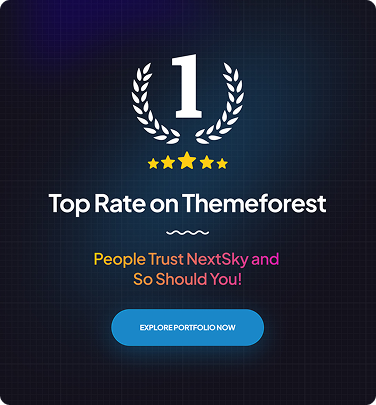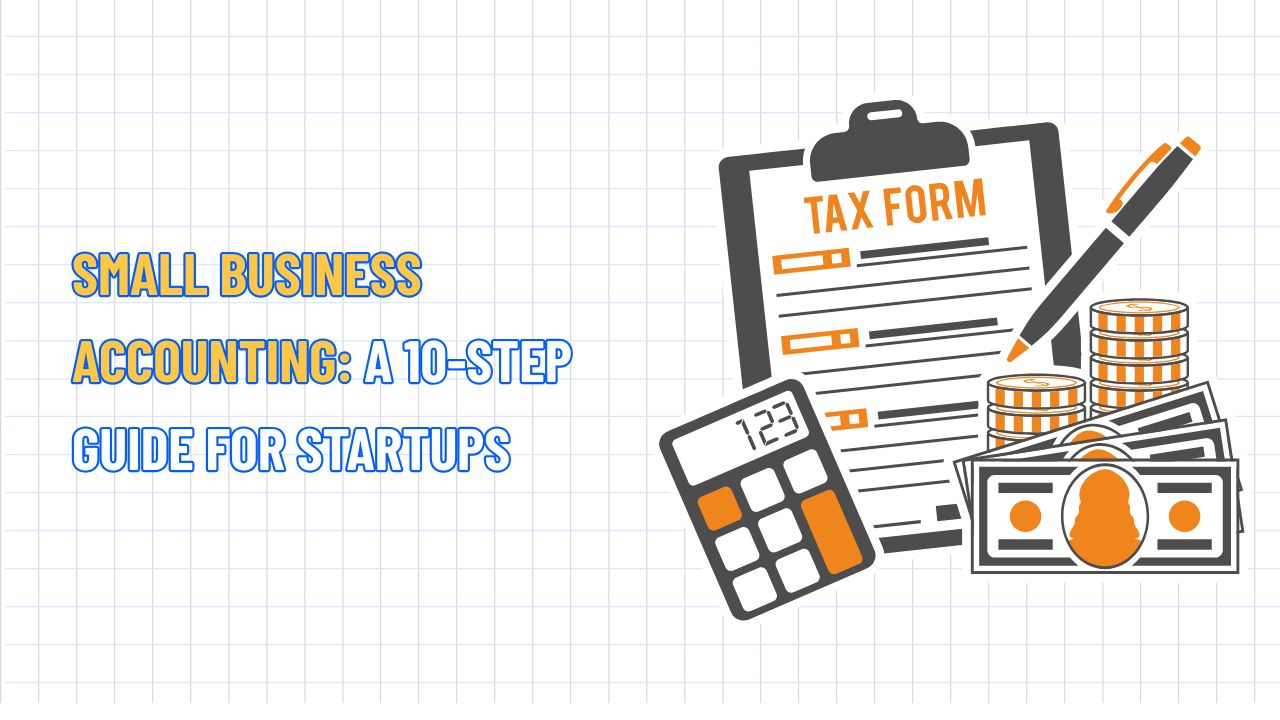How to Test Business Ideas for Success: A Comprehensive Guide
Table of Contents Hide
Testing business ideas is an important step in turning your vision into a successful project. In this article, NextSky will provide a comprehensive guide and practical strategies to help you test your idea effectively, match it to market demand, and secure the necessary resources to grow.

Why validating a business idea is crucial
Before diving into the step-by-step process, it’s essential to understand why validating a business idea is a critical step that cannot be skipped. Launching a business without a test is like sailing a ship without a map, you’re likely to veer off course. Here’s why validation is necessary:
- Minimize risks: Validation helps reduce financial and time losses by identifying flaws early. According to the U.S. Bureau of Labor Statistics, about 50% of new businesses fail within six years, often due to untested assumptions.
- Boost investor confidence: Investors value evidence of market demand and profitability. A validated idea demonstrates thorough preparation and reduces their risk.
- Refine your vision: Testing clarifies what works and what doesn’t, allowing you to reshape your business model or improve your product before scaling.
- Save resources: Prevents costly mistakes in product development or marketing strategies.
- Drive innovation: Feedback loops foster continuous improvement, helping you create a standout product in a competitive market.
Read more: Top 26 Best Online Business Ideas in 2025 Worth Trying Today
Step-by-step guide to test business idea
Here’s a clear roadmap to test business ideas proven by successful entrepreneurs and tailored to today’s digital landscape.
Clearly define your idea
For a successful idea, articulate it concisely, clearly, and compellingly before taking action. Identifying the problem you’re solving and your target audience allows you to test effectively and gather valuable feedback, laying a strong foundation for growth. Ask yourself:
- What real-world problem does your product or service solve?
- Who is your target audience, and what challenges do they face?
- What makes your idea unique and worth customers’ attention?
Action tip: Write a concise sentence summarizing your idea. For example, “We offer eco-friendly subscription boxes with sustainable household products for millennials embracing a green lifestyle.” This clarity keeps you focused during validation and communicates your vision effectively.
Conduct in-depth market research
Before investing time and money, confirm that a market for your idea exists. Market research helps you understand actual demand, identify competitors, and gauge market size, reducing risks and increasing your chances of success.
- Analyze existing solutions: Study competitors’ products, pricing strategies, and customer feedback to understand their competitive advantages. Use tools like SEMrush or Ahrefs to explore high-ranking keywords and identify content gaps.
- Explore market trends: Use Google Trends to track user interest in relevant keywords. For example, if launching a plant-based snack, search terms like “vegan snacks” or “healthy eating.”
- Estimate market size: Determine your Total Addressable Market (TAM) using industry reports or free data sources like Statista or IBISWorld, often accessible through public libraries.
Action tip: Create a table listing key competitors, their strengths, weaknesses, and unique selling propositions (USPs) to identify untapped gaps and position your product more effectively.
Read more: TOP 40+ Home business at home for 2025 with Real Examples
Engage with your target audience
Listening to potential customers is key to turning your idea into a valuable solution. Direct conversations reveal their needs, desires, and unresolved pain points, validating whether your idea is truly useful.
- Surveys and interviews: Use tools like Google Forms or Typeform to create surveys. Ask open-ended questions like, “What frustrates you about [current solutions]?” or “What would make you try a new product like [your idea]?”
- Focus groups: Organize small groups of 5–10 people to discuss your idea. If in-person isn’t feasible, use Zoom or Discord for virtual sessions.
- Leverage online communities: Engage in relevant forums on Reddit, Quora, or LinkedIn industry groups. For example, if your idea is a fitness app, join subreddits like r/fitness to gather feedback.
Example: Melanie Masarin, founder of Ghia, a non-alcoholic beverage brand, tested her product with over 1,000 potential customers, gathering detailed feedback to refine flavors. This process ensured Ghia’s product matched consumer tastes and expectations from day one.
Build a minimum viable product (MVP)
An MVP is a simplified version of your product that tests core features with minimal cost. Whether it’s a landing page, prototype, or pilot service, an MVP lets you quickly assess market fit before heavy investment.
- For physical products: Create prototypes using 3D printing or low-cost materials. For example, a handmade product version can be tested at local markets.
- For digital products: Build a basic app or website using no-code platforms like Bubble or Webflow. A single-product Shopify store can serve as an MVP for an e-commerce idea.
- For services: Offer a trial service to a small group. For example, a consulting business could start with free or discounted sessions to gather feedback.
Action tip: Follow the Lean Startup’s Build-Measure-Learn model. Launch your MVP early to collect real-world feedback, then iterate and improve based on data.
Test through crowdfunding
Platforms like Kickstarter or Indiegogo are powerful tools to raise funds and gauge customer interest before launching.
- Validate demand: A successful crowdfunding campaign proves market interest. For example, Fly by Jing tested its Sichuan chili crisp via crowdfunding to confirm demand before launch.
- Build an initial community: Campaigns attract early adopters who provide honest feedback and spread the word.
- Test pricing strategies: Experiment with different price points to find the optimal balance for customer spending behavior and expectations.
Action tip: Create an engaging campaign video and offer tiered rewards to attract backers. Monitor backer comments to understand what excites or concerns them.
Analyze financials
Financial viability is critical for validating a business idea. Understanding costs, setting reasonable pricing, and assessing scalability ensure your model is profitable and efficient. Clear financial analysis helps manage cash flow and impresses investors.
- Estimate costs: Account for all expenses, from materials and production to marketing and shipping.
- Forecast revenue: Use MVP data to project sales. For example, if 10% of survey respondents would buy at $20, estimate revenue based on your TAM.
- Assess scalability: Ensure you can scale production without compromising quality or profits. As Todd Masonis of Dandelion Chocolate noted, scaling too fast without adequate infrastructure can lead to losses.
Action tip: Build a basic financial model in Excel or Google Sheets, including fixed costs (e.g., equipment), variable costs (e.g., materials), and projected revenue.
Create a test website and leverage social media
A simple website and consistent social media presence help you reach potential customers, collect behavioral data, and measure interest. These platforms also build an early user community to shape, provide feedback, and amplify your brand during testing.
- Build a landing page: Use Shopify, Wix, or Squarespace to create a landing page with a clear call-to-action (e.g., “Join the waitlist” or “Pre-order now”). Include a form to collect email addresses.
- Promote on Social Media: Share your idea on platforms like Instagram, TikTok, or LinkedIn. Use targeted ads to reach your audience and track click-through rates.
- Analyze engagement: Use tools like Google Analytics or Meta Ads Manager to track visitor numbers, sources, time spent, and actions taken on your site. These metrics gauge your idea’s appeal.
Action Tip: Run A/B tests on your landing page, experimenting with headlines, images, or CTAs. For example, test “Get Early Access” vs. “Join the Waitlist” to see which drives more sign-ups.
Protect your idea
A great idea is the foundation of a sustainable business, but without proper protection, it’s vulnerable to copying or theft. Safeguarding your intellectual property (IP) ensures you retain control and value from your creation. Depending on your industry and product, consider:
- Patents: For innovative products, technologies, or processes.
- Trademarks: Protect your brand name, logo, or slogan to build unique market recognition.
- Copyrights: Apply to creative works like designs, digital content, software, or academic materials.
Action tip: Consult a legal expert to determine the right protection. If patents are too costly initially, prioritize trademark registration for a quick, effective way to safeguard your brand identity.
Iterate and grow
Validation isn’t the end, it’s the start of continuous improvement. Each piece of feedback is an opportunity to refine your product and strategy to align with real-world needs.
- Incorporate feedback: Analyze customer input to improve your MVP or marketing approach.
- Track trends: Stay updated on industry changes using tools like Google Alerts or newsletters.
- Pivot if needed: If testing reveals flaws, adjust your idea. For example, if eco-friendly packaging tests poorly due to high costs, switch to more affordable materials.
This structured approach ensures your business idea is tested, refined, and positioned for success in a competitive market.
Test business ideas is a strategic step toward building a solid foundation. With guidance from NextSky, you can test feasibility, refine based on real feedback, and position your idea for the right market. Whether you're launching a product, offering a service, or starting a Shopify store, starting small, testing smart, and letting data lead the way will boost your chances of long-term success.










